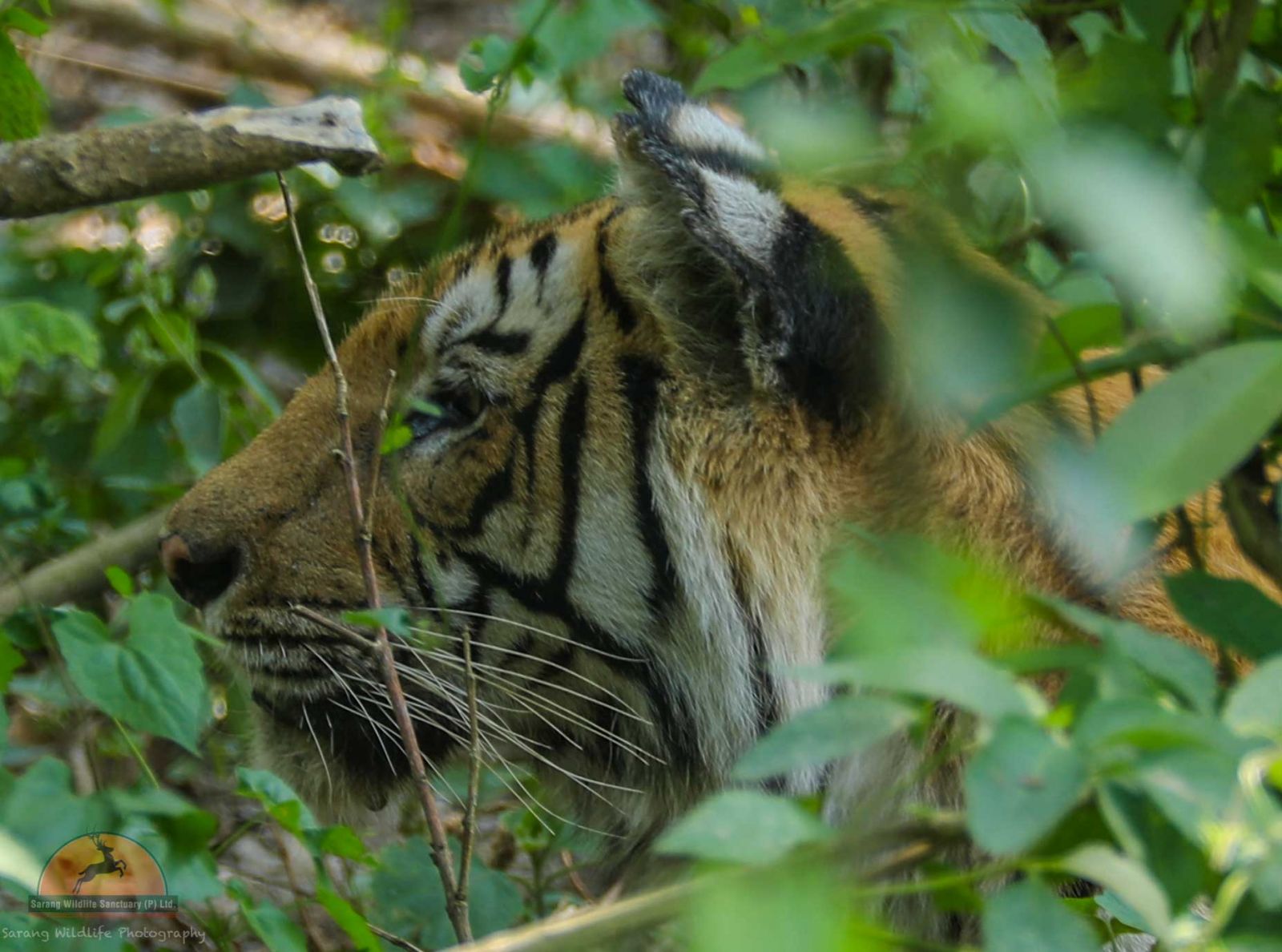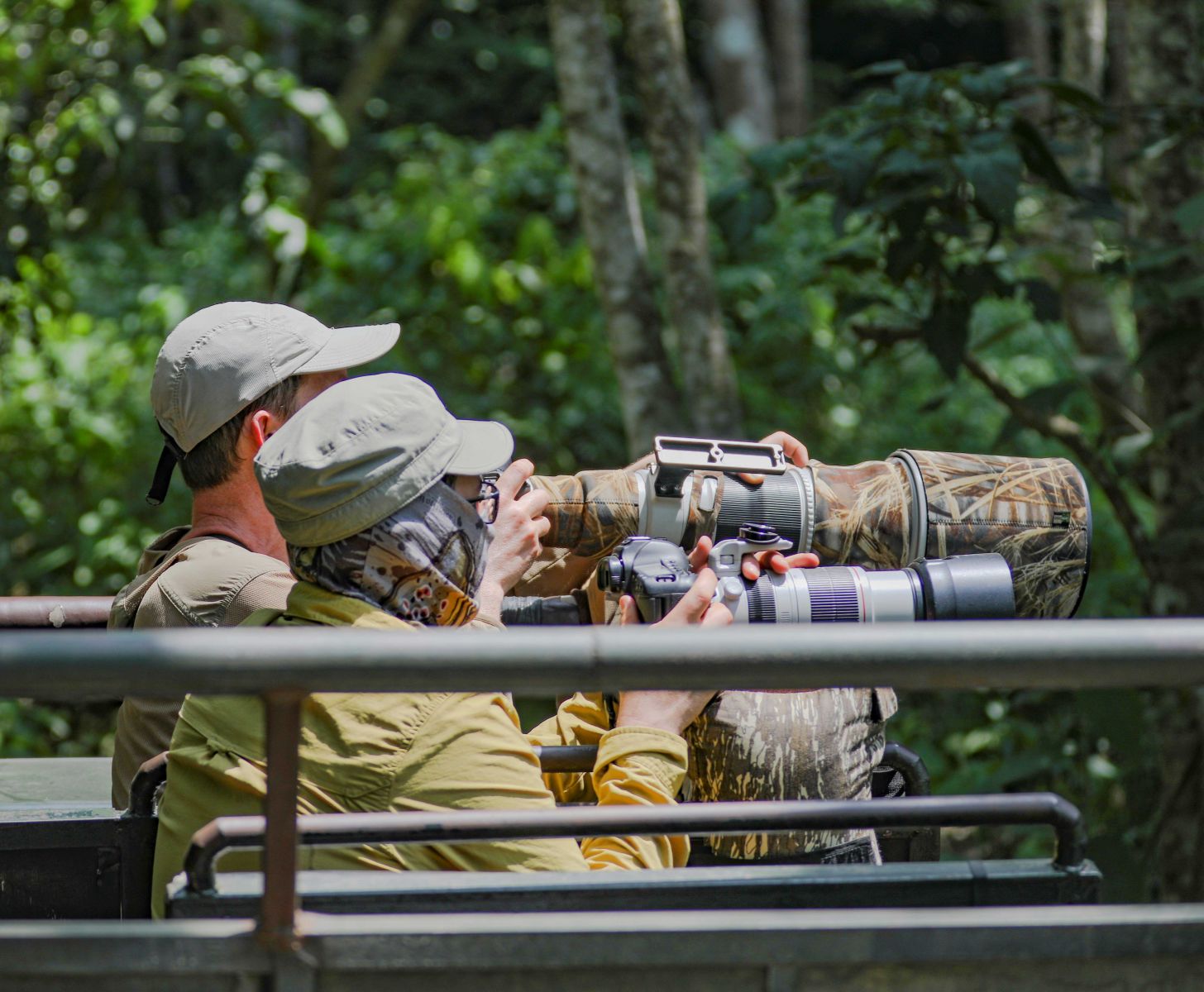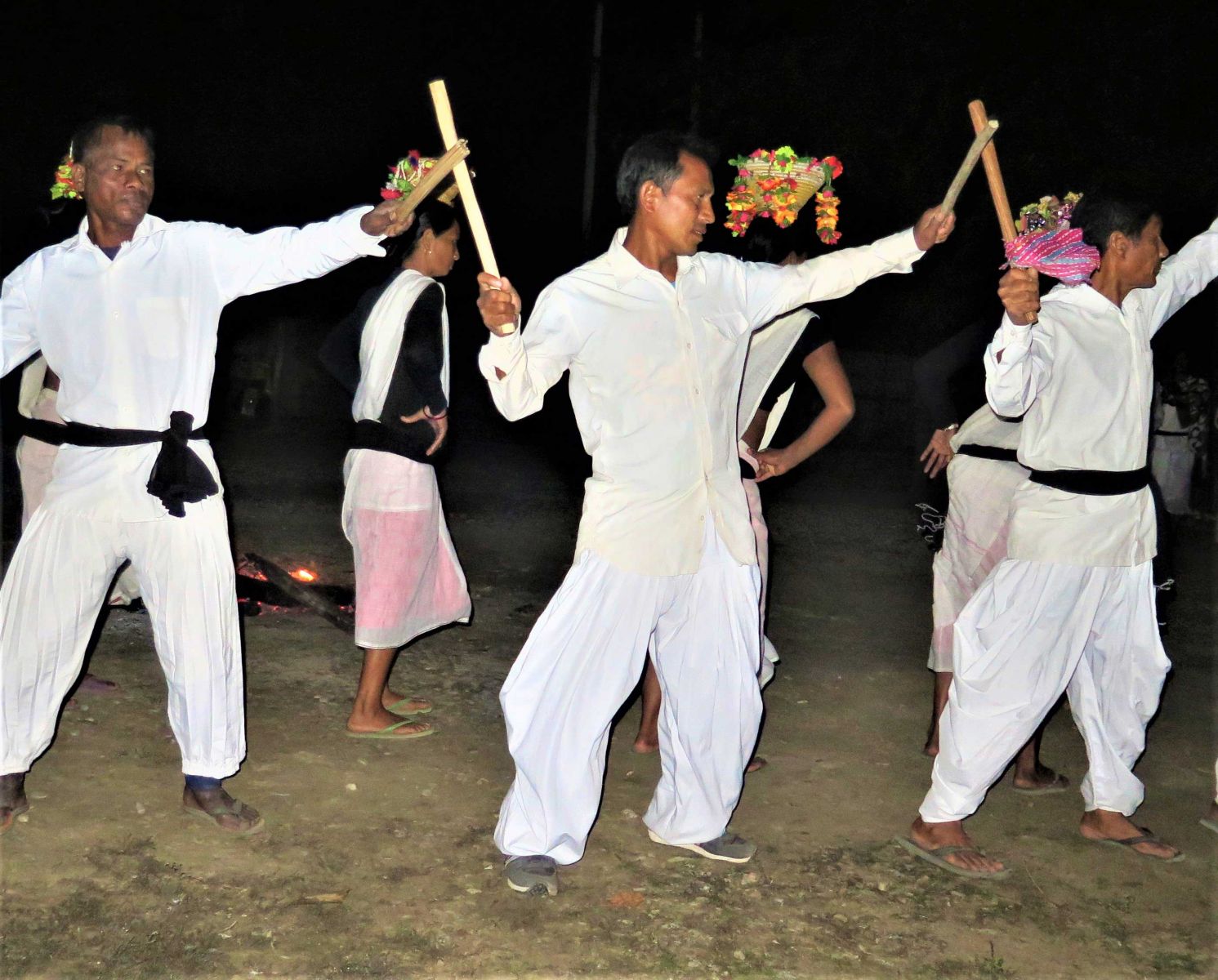 Wow!What pleasure. What luxury. And what relief, after a month trekkingrough on mountain trails in Solu District east of Kathmandu and in Gorkha, at the west. We were a party of six adventurous souls from the very outdoorsy western American state of Oregon. When we planned to cap our final days in Nepal by visiting Chitwan National Park, a friend suggested Sarang Wildlife Sanctuary as a good choice for a jungle lodge. Good advice.
Wow!What pleasure. What luxury. And what relief, after a month trekkingrough on mountain trails in Solu District east of Kathmandu and in Gorkha, at the west. We were a party of six adventurous souls from the very outdoorsy western American state of Oregon. When we planned to cap our final days in Nepal by visiting Chitwan National Park, a friend suggested Sarang Wildlife Sanctuary as a good choice for a jungle lodge. Good advice.
Sarang is new. It’s near the small Meghauli Airport; thus, accessible by plane or overland by bus or car. And, it’s snug up next to the park buffer zone. We found Sarang’s quiet, comfortable ambiance and welcoming services just right. It features good wildlife viewing and exotic birding, forest walks, grassland elephant rides, jungle safaris by jeep inside the park, and a pleasant afternoon float in small boats down the Rapti River to the confluence with the NarayaniRiver to view the sunset.
We started out from Kathmandu in a privately chartered minibus, half a day’s ride to the lodge near the Chitwan District town of Meghauli. We had a choice of three options for the overland route. One wasvia the narrow Kulekhani road to Bhimphedi, then on west across the flat lowlands from Hetauda to Bharatpur and Meghauli. The second option was via the historic, winding hill road through the Palung Valley to Hetauda, and on to the park. The third wasviathe busy TribhuvanRajpathighway west to Mugling then south alongsidethe Trishuli River to Narayanghat/Bharatpur and on to Meghauli. We opted for the second route, via the historic old road past Simbhanjyang, Daman and Palung, then down the steep, forested south side of the Mahabharat hills to the lowlands. AtHetaudawe stopped briefly for refreshments at a modern hotel. When I asked a waiterwhat kind of coffee was available, he said,“We serve ‘normal’ coffee.” If ‘normal’ is the Nescafé they offered, does that mean that we espresso-lovers are ‘abnormal’ for craving a latté or a mocha?
A few hours later, comfortably revived by our hot drinks, we reached Meghauli. There was certainly nothing lacking in our choice of a jungle retreat. When we arrived at Sarang that mid-afternoon, we were warmly greeted by the owner/manager, Subodh Pradhan, and his staff. After a welcoming drink of fruit juice, we were shown to our cabins, delighted to know we wouldhave a comfortable beds, hot showers, and back window viewsdirectly out into the buffer zone forest. We spent the rest of the dayrelaxing and enjoying the clean, quiet, friendly atmosphere and drinking in the sights and sounds of the jungle around us.
If the definition of “luxury” is a pleasant and satisfying indulgence, here it was, and at a competitively reasonable price. We had originally booked the lodge for two nights, but it didn’t take much discussion to unanimously agree to an extra day; time enough to recharge our bodies and our batteries in comfort. At all times while at Sarang we enjoyedNature at her best.
Chitwan National Park, a World Heritage Site, was once the private hunting reserve for the exclusive use of Nepal’sfeudal elites―kings, prime ministers, and their European guests, who hunted some big game species almost to extinction. In 1973, the area was declared as Nepal’s first national park. Since then, with considerable scientific input, protection and reduced poaching, the wildlife population has steadily recovered, especially that king-of-stealth the Bengal Tiger, and that ponderous-prehistoric-throwbackthe Greater One-Horned Rhinoceros. Those two popular tourist attractions share the park with leopards and other cats, wild boar, sloth bears, wild elephants, and other mammals totaling 68 species. There are also 56 species of reptiles and amphibians including gharial and mugger crocodiles; an amazing 126 species of fish; and over 540 species of birds, some exotic and quite rare. All these crittersshare Chitwan’shardwoodsalforest, the park’s vast grasslands, alluvial floodplain, andriverine woodlands.
Like all tourists at the park, we wanted to see a few of the most exceptional animals and birds. We did quite well on both counts, though the tigers eluded us. On the elephant safari, we photographed rhinos fairly close up, and saw many monkeys and herds of deer; and on forest walks and during the river ride we spotted a huge variety of birds. For the best chance at seeing a tiger, our host personally took us on a jeep safari deep into the park where he had photographed one at rest only a few weeks earlier. After waiting in silence for about fifteen minutes, we were pleasantly surprised when two lumbering black sloth bears crossed the forest track in front of us. In an instant they were there; in anotherthey were gone. Tigers, that day, were a no-show.
One of the most memorable events of a Sarang Wildlife Sanctuary stay isthe promiseof a glorious sunset where the Rapti River joins the broad Narayani River before it rolls south into India to join Mother Ganga, the Ganges River. Our sunset excursion was set for the second afternoon, beginning with a quiet float trip down the Rapti River. Along the way we spotted a variety of exotic water birds and crocodiles and deer on the river banks. The Sarang staff had gone ahead (by jeep) and were setting out a table and chairs when we arrived. They served bowls of popcorn and a variety of drinks as we watched in awe as the sun slid slowly down the horizon, changing from bright yellow, to a brassy gold, toblood red as it passed through the hazy atmosphere. Our cameras got a workout.
Then, as darkness crept up on us, we packed up and boarded the jeeps for the return ride alonga deeply rutted track back to the lodge.
Our last eveningat Chitwan was capped by a dance performance around a nice campfire, in the dark, staged bya talented troupe of indigenous Tharu ethnic villagers who live nearby. The boisterous drum beat and whirling dancers soon brought us to our feet to join them. It was happy ending to our adventure.
Someone asked, “Would we do it all over again?”
“You bet! In a heartbeat.”
 Going to Chitwan’s Sarang Wildlife Sanctuary
Going to Chitwan’s Sarang Wildlife Sanctuary
BY SURFACE you can take a pleasant, geographically and culturally impressive half-day drive by private car on either of two winding hill roads southwest from Kathmandu then across the Inner Terai lowlands to Meghauli Or, you can travel by car or tourist bus for five hours on the Kathmandu-to-Narayanghat highway down the Trishuli River valley to Narayanghatand Bharatpur where you’ll be picked up by resort staff for the remaining ride to Meghauli.
To go by tourist bus, sign up with your travel agent and be prepared to depart Kathmandu around 7 a.m. most mornings. There are tea and lunch stops along the way.
BY AIR you have two choices. One is the scenic 35-minute flight from Kathmandu to Meghauli Airport every Monday, Wednesday, and Saturday. The resort staff will greet you there and whisk you away on the five-minute drive to Sarang. The other is a daily 30-minute flight, Kathmandu to Bharatpur where you will be greeted by Sarang staff and driven to a little over a half hour past small villages and farms to the resort.
BY RAFT, floating down the Trishuli River to the Park. This two (or more) days trip takes you through several rapids and past villages and a variety riverside flora and fauna. Book it with a Kathmandu travel agent.
Contact Sarangon the web at http://sarang.com.np, and by email atsarangwildlife@gmail.com.










